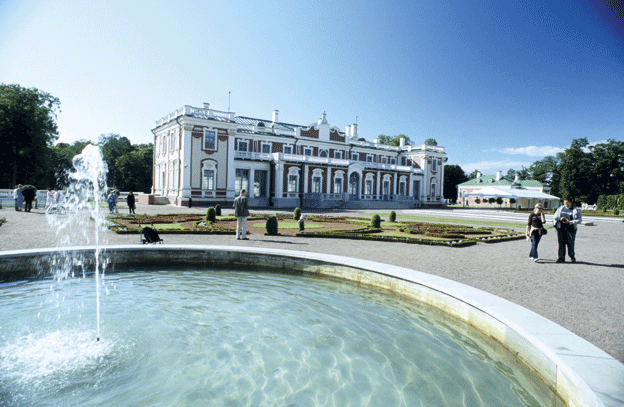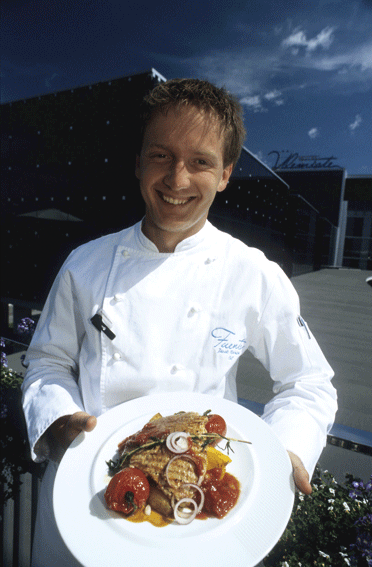
Tourism
 Estonia
Estonia
Time out in Tallin
Ringing mobiles, ubiquitous laptops, tooting car horns: these are the sounds of 21st Century Tallin. All are notes of modernity almost unheard of twenty years ago. Today, WiFi covers the whole of the Estonian capital, a quietly confident city determined to make its mark in the European Union. Yet the past lingers on in Tallin’s atmospheric old town, a UNESCO World Heritage Site.
By: Veronica Maria Garbutt
Tallin was first described in 1154 by the Arab scholar Al Idrisi who called it Kolovan. To the Scandinavians it was Lindanas and the Germans later named it Reval. Tallin is said to be derived from the Estonian “Taani Linn” (Danish City) dating back to the time of Dan-ish rule. The Estonian language is closely related to Finnish and today English is overtaking Russian as the most widely spoken second language.
In the 13th Century Tallin was a thriving Hanseatic trading centre where merchants and nobles came from all over Europe to do busi-ness. A fortified medieval village, it was one of the east’s best known ports, home to goods from as far away as Africa. Today it is still a trading city and many of the medieval buildings are a tribute to that tradition. In recent years the city has registered growth of over five per cent and is a key transit point for Russian oil. The capital’s new self image is a young dynamic, techno savvy metropolis ready to do business with Western Europe , the Middle East and the rest of the world on equal terms. Recently the Financial Times of London de-scribed it as a kind of herring-loving Hong Kong. 
Central Tallin is small and easy to negotiate on foot. Taxis wait outside the airport terminal and charge about US$10 for the ten min-ute journey into town. The public transport system is extensive though not particularly reliable. Trams, trolleybuses and route buses are the options and tickets can be bought from booths near the stops. Taxis are metered and it’s always best to insist that the meter is turned on at the start of your journey. The main taxi rank is at Viru Valjak near the Estonian Drama Theatre.
Tallin’s heart lies in the old town, once enclosed by the city gates. The upper part, known as Toompea, is one of the finest examples of a medieval city and reputed to be the best preserved in Northern Europe. Don’t miss the Castle which is the seat of the Estonian gov-ernment and Danish King’s Garden. Toompea’s hill viewing platforms are the place to enjoy the city panoramas – a good spot for pho-tographers too.
In the lower town the cobbled Raekoja plats (Town Hall Square) has been the hub of life since trading began. A reminder of the city’s Hanseatic past is the Gothic Town Hall on the square’s southern side. The Town Council Pharmacy in the north eastern corner has been here for millennia and is still a working chemist’s. And the Great Guild Hall at Pikk 17 today houses the Ajaloomuseum featuring the country’s history up to the mid-19th Century. 
Walk northwards now along Pikk, formerly the street of traders. Running parallel is Lai, the street of craftsmen. At No. 17 lies the Ap-plied Art Museum, housed in a former gallery. Nearby is the House of the Blackheads, former HQ of a guild of unmarried merchants who played a major role in medieval Tallin. A good place to exit the old town is through the twin towers of Viru Gate, beyond which are a clutch of new glass and steel buildings housing restaurants, hotels, banks, offices, department stores and the main city bus station. And just north lies the ferry port.
From the city centre you can take a bus out to sprawling tranquil Kadriorg Park built by Peter the Great of Russia. Designed by the Italian architect Michetti in the early 18th Century, its focal point is the great Baroque Palace built for Czarina Catherine. Restored to its former glory it now houses the State Art Museum. Right behind it is the Presidential Palace, beside which is the Peter the Great Home Museum. This humble cottage is where the Czar stayed during his early visits to Tallin. Here you can admire some of Peter’s posses-sions.
The Song Festival Grounds in Kadriorg, completed in 1960, was considered a landmark in Modernism. And the stately Kumu Art Mu-seum, reminiscent of an ocean liner, showcases both classical and contemporary Estonian art. It is worth noting that most museums in Tallin are closed on Mondays, Tuesdays and public holidays.
Just east of Kadriorg lies Pirita, a resort area with a sandy beach, pine woods, good restaurants and the yachting centre built for the 1980 Olympics. In summer you can hire pedalos and rowing boats beside the bridge where Pirita tee crosses the river. Or perhaps you might rent a surfboard, try paragliding or play a round of mini-golf? Highly recommended is an evening stroll along Pirita tee to watch the sun set over the Gulf of Finland. Magical!
Just 6 km west of Tallin centre near Rocca al Mare lies the Estonian Open Air Museum. Here wooden farm buildings, windmills, watermills and other trappings of 18th and 19th Century rural life have been assembled. A great place to escape the city, the museum celebrates folk holidays in traditional style with dance, music, colourful costumes and song. The capital’s other attractions include Tallin Zoo and Tallin Botanical Gardens.
Food is based on traditional peasant fare of bread and Baltic herring, porridge and milk, peas and meat. Over the years the national cuisine has absorbed Danish, Swedish, German and Russian influences. Kartulid (potatoes) were introduced in the 17th Century and they now appear in almost every Estonian meal. Leib (black bread) is so prized that some locals refer to meat only as “something to go with the bread”.
A good place to sample local cuisine is Eesti Maja near the Foreign Ministry. This is the place to sample mutton in peppermint garlic sauce, herring and roast roe deer. For authentic bean soup and rustic fare dining al fresco at the Estonian Open Air Museum is a not to be missed experience, as is a beach picnic at Pirita.
Back in the Old Town, Olde Hansa is the most heralded medieval restaurant in the Baltics. For seafood, head to Mookkala, there to sample shark with cherry dressing and swordfish. And if it’s Russian food you are after, then Klafira is the answer. For Indian food try Maharajah, one of the first foreign restaurants in Tallin. Today you can sample the food of many other lands in town – from French and Italian to Thai and Turkish. “May your stomach be happy”, as the local saying goes!
Shopping in Tallin is easy and fun as there are no great hordes of shoppers around. And everything is on a small scale. Favourite buys from Tallin include hand knitted sweaters, linen clothing, ceramics, tapestries, local art, hand-made jewellery, marzipan and CDs of Estonian music. For arts and crafts the medieval Katarina passage off Vene Street is the place to see leather, glass, hats and quilts being crafted. Committed hagglers should head for the city market. Stockmann nearby is the best known department store while Viru Keskus is a popular shopping mall in the heart of the city. Shops are generally open 10.00 – 18.00.
If you are visiting between June and August, make sure you have time to spend a day or two on the beach in Parnu. Lying just over two hours drive from Tallin on the road to Riga, this former Hanseatic port is Estonia’s summer capital. The main attraction of this genteel, leafy resort is the 7 km sandy beach backed by lime trees, wooden houses, Bauhaus style villas and Art Nouveau hotels. There is no better place to unwind, relax and generally get away from it all. Happy Journey!